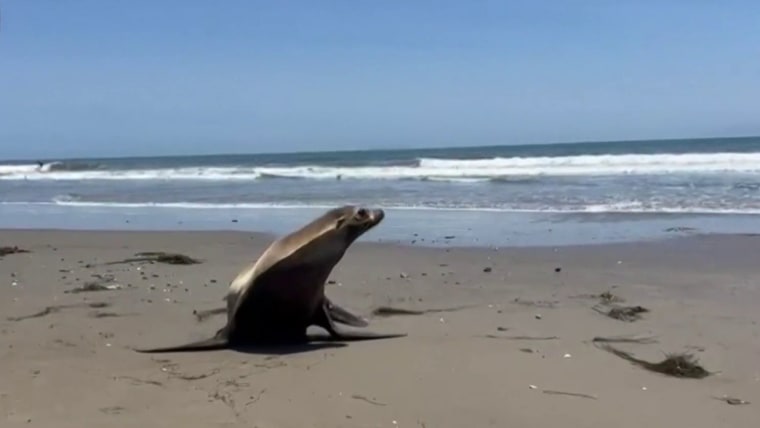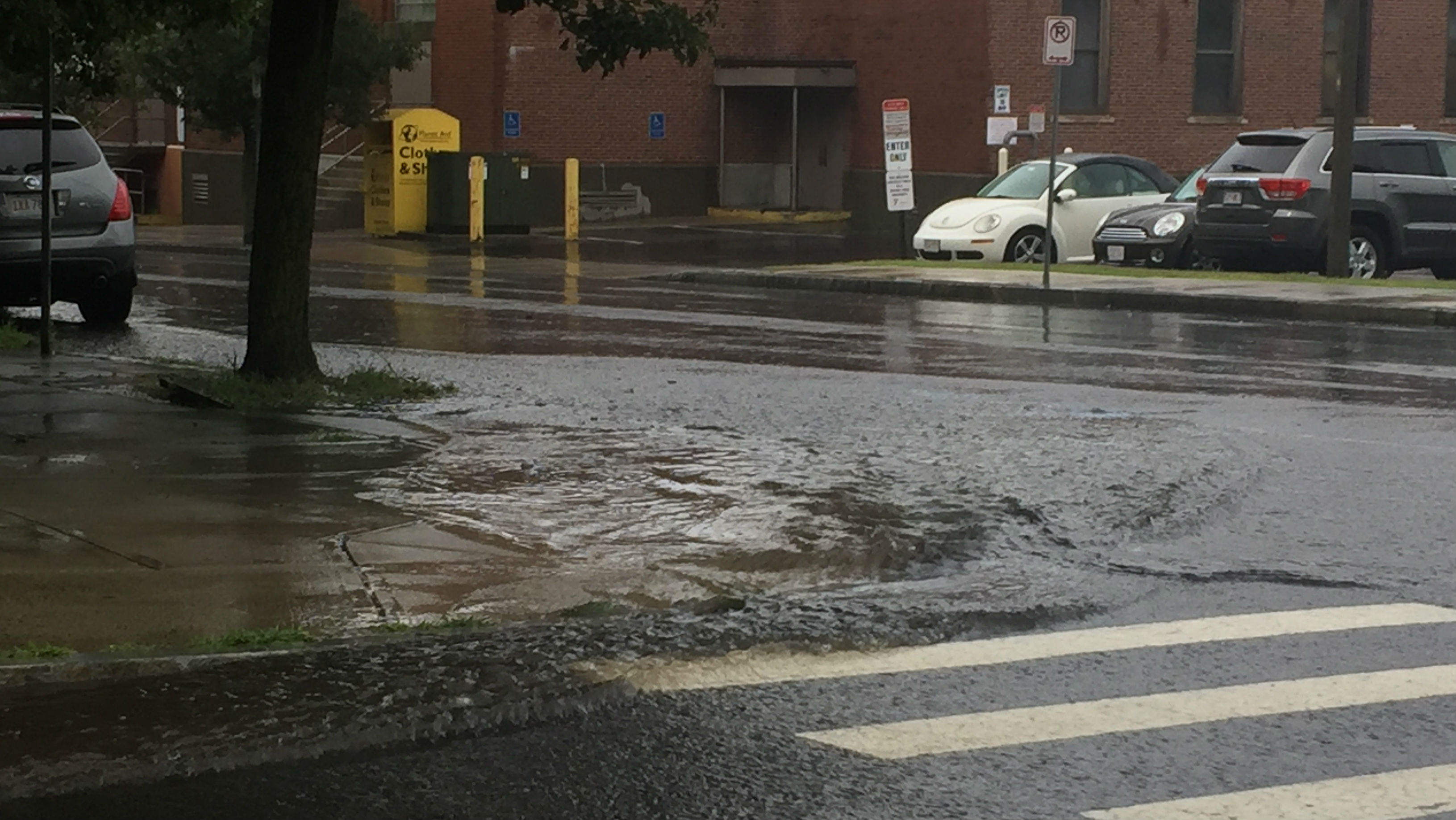California Coast Algae Bloom: Threats To Marine Ecosystems

Table of Contents
Understanding California Coast Algae Blooms
Types of Harmful Algae
Harmful algal blooms are caused by various species of algae, primarily dinoflagellates and diatoms. These microscopic organisms, under specific environmental conditions, rapidly multiply, creating dense blooms that can extend for miles along the coastline. Different species produce different toxins, impacting marine life and even posing risks to human health.
- Alexandrium catenella: This dinoflagellate produces saxitoxin, a potent neurotoxin responsible for paralytic shellfish poisoning (PSP).
- Pseudo-nitzschia: Certain species within this diatom genus produce domoic acid, a neurotoxin that can cause amnesic shellfish poisoning (ASP).
- Karenia brevis: This dinoflagellate is responsible for many red tides along the Gulf Coast and can produce brevetoxins, affecting marine life and human respiratory systems.
The formation of these blooms is fueled by a combination of factors:
- Nutrient runoff: Agricultural fertilizers, sewage discharge, and stormwater runoff introduce excess nitrogen and phosphorus into coastal waters, acting as potent fertilizers for algal growth.
- Warmer water temperatures: Climate change is contributing to increased ocean temperatures, creating ideal conditions for the proliferation of certain harmful algal species.
Causes of Algae Blooms
The increasing frequency and intensity of California coast algae blooms are largely attributed to human activities. While natural factors play a role, anthropogenic influences are significantly exacerbating the problem.
- Agricultural runoff: Fertilizers used in agriculture are a major source of nutrient pollution, contributing significantly to algal blooms.
- Sewage discharge: Untreated or inadequately treated sewage releases large amounts of nutrients into coastal waters.
- Climate change: Rising ocean temperatures and altered weather patterns create favorable conditions for harmful algal species to thrive.
- Urban development: Increased urbanization leads to increased runoff and nutrient pollution from various sources.
Natural factors, such as upwelling events that bring nutrient-rich deep waters to the surface, can also contribute to bloom formation, but these events are often amplified by the aforementioned human-induced factors.
Impacts on Marine Ecosystems
Impacts on Marine Life
California coast algae blooms have devastating consequences for marine life. The toxins produced by harmful algae can directly kill or severely harm various species.
- Fish kills: High concentrations of toxins can lead to massive fish kills, impacting commercially important species and disrupting the entire food web.
- Shellfish poisoning: Toxins accumulate in shellfish, posing risks to humans who consume contaminated seafood. This necessitates closures of shellfish harvesting grounds, impacting the fishing industry.
- Marine mammal and bird mortality: Marine mammals and birds can be affected through the ingestion of contaminated prey or direct exposure to toxins. Strandings and mortality events have been linked to HABs.
Impacts on the Food Web
The disruption caused by algae blooms extends far beyond individual species. The cascading effects on the food web are profound.
- Predator-prey relationships: The decline of prey species due to toxicity or oxygen depletion affects predators higher up in the food chain.
- Ecosystem imbalance: The dominance of harmful algae disrupts the natural balance of the ecosystem, favoring certain species while negatively impacting others.
- Long-term effects on biodiversity: Repeated blooms can lead to long-term changes in species composition and biodiversity, potentially resulting in irreversible damage to the ecosystem.
Economic Impacts
The economic consequences of California coast algae blooms are significant, impacting various sectors.
- Fisheries: Closures of shellfish harvesting areas and fish kills result in substantial economic losses for the fishing industry.
- Tourism: Beach closures and advisories against swimming or engaging in water sports negatively impact tourism revenue.
- Recreational activities: The impact extends to recreational activities like boating, surfing, and kayaking.
- Monitoring and mitigation costs: The costs associated with monitoring, research, and mitigation efforts further add to the overall economic burden.
Mitigation and Monitoring Efforts
Monitoring Techniques
Effective monitoring is crucial for early detection and management of algae blooms. Various techniques are employed:
- Satellite imagery: Satellite-based remote sensing provides a broad overview of bloom extent and distribution.
- Water sampling: Regular water sampling allows for the identification of harmful algal species and the quantification of toxin levels.
- Early warning systems: Data collected from monitoring programs are used to develop early warning systems, providing timely alerts to relevant stakeholders.
- Public health advisories: Public health agencies issue advisories to warn the public about potential health risks associated with HABs.
Mitigation Strategies
Reducing the occurrence and impact of algae blooms requires a multi-pronged approach:
- Reducing nutrient pollution: Implementing stricter regulations on agricultural runoff and improving wastewater treatment are crucial steps.
- Sustainable land management practices: Promoting sustainable agricultural practices, such as reduced fertilizer use and cover cropping, can minimize nutrient runoff.
- Improved stormwater management: Investing in better stormwater management infrastructure can help prevent nutrient-rich runoff from reaching coastal waters.
- Research and development: Continued research is essential to improve our understanding of HABs and develop new mitigation strategies.
Conclusion
California coast algae blooms present a significant threat to the state's marine ecosystems, causing widespread harm to marine life, disrupting the food web, and inflicting substantial economic losses. The escalating frequency and intensity of these blooms are largely driven by human activities, highlighting the urgent need for concerted action. Continued research, improved monitoring, and a collaborative effort involving government agencies, researchers, and the public are essential to mitigate the devastating impacts of these blooms and protect the health of our oceans. We must all actively participate in reducing nutrient runoff, supporting sustainable practices, and advocating for stronger environmental policies. Let’s work together to protect the California coast from the devastating effects of harmful algal blooms.

Featured Posts
-
 Kyriaki 4 5 Ti Na Deite Stin Tileorasi
May 30, 2025
Kyriaki 4 5 Ti Na Deite Stin Tileorasi
May 30, 2025 -
 The Monte Carlo Masters Musettis Injury And Alcarazs Triumph
May 30, 2025
The Monte Carlo Masters Musettis Injury And Alcarazs Triumph
May 30, 2025 -
 Guillermo Del Toros Frankenstein A New Tease And The Mystery Of Its Core Theme
May 30, 2025
Guillermo Del Toros Frankenstein A New Tease And The Mystery Of Its Core Theme
May 30, 2025 -
 Ufc Rivalry Daniel Cormier Reveals Heated Exchange With Jon Jones Team
May 30, 2025
Ufc Rivalry Daniel Cormier Reveals Heated Exchange With Jon Jones Team
May 30, 2025 -
 Immigration Chief In Sierra Leone Dismissed
May 30, 2025
Immigration Chief In Sierra Leone Dismissed
May 30, 2025
Latest Posts
-
 Rainfall Intensification In Western Massachusetts The Climate Change Factor
May 31, 2025
Rainfall Intensification In Western Massachusetts The Climate Change Factor
May 31, 2025 -
 Kaitlyn Devers Pre Last Of Us Role A Must See Crime Drama
May 31, 2025
Kaitlyn Devers Pre Last Of Us Role A Must See Crime Drama
May 31, 2025 -
 The Crime Drama That Launched Kaitlyn Dever Before The Last Of Us
May 31, 2025
The Crime Drama That Launched Kaitlyn Dever Before The Last Of Us
May 31, 2025 -
 Western Massachusetts Rainfall Climate Change Trends And Projections
May 31, 2025
Western Massachusetts Rainfall Climate Change Trends And Projections
May 31, 2025 -
 A Breakthrough Performance Kaitlyn Devers Crime Drama Before The Last Of Us
May 31, 2025
A Breakthrough Performance Kaitlyn Devers Crime Drama Before The Last Of Us
May 31, 2025
